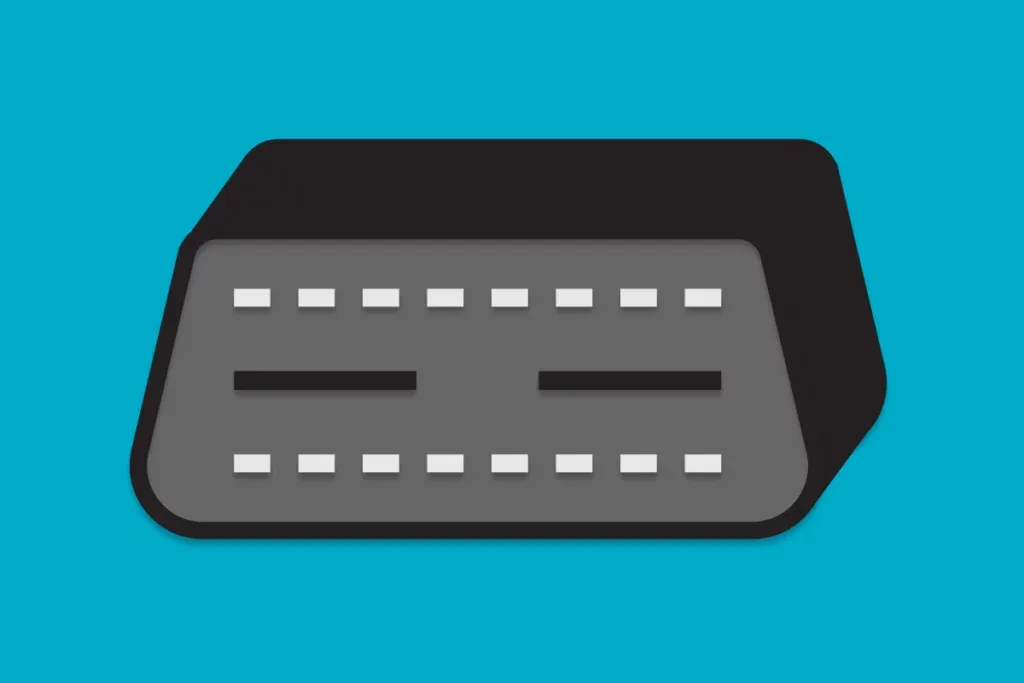Since 2001, new vehicles manufactured in the European Union have come equipped with advanced technologies that make driving safer, more efficient, and more enjoyable. One of the critical features of these cars is the OBD connection. This post explores what the OBD connection is, how it works, and the benefits it offers for businesses with fleets or even just 1 or 2 vehicles.
What Is an OBD Connection?
OBD stands for ‘on-board diagnostics’. It is a system that monitors the performance of a vehicle, detects any issues that may arise, and provides diagnostic access to view error codes. An OBD system is usually connected to a vehicle’s engine control unit (ECU), which is responsible for managing the engine’s operation and performance.

An OBD connection is a physical port located under the dashboard of a vehicle that connects the OBD system to an external device. This external device can be a diagnostic tool or a computer or mobile device application that collects data from the OBD system.
How Do OBD Connections Work?
OBD connections use a standard protocol called OBD-II to communicate with external devices. OBD-II is a standardised system that allows diagnostic tools and applications to communicate with the OBD system and retrieve information about the vehicle’s status and performance.
An OBD connection can be a powerful tool for businesses that operate a fleet of vehicles. Fleet managers can use OBD connections to monitor vehicle performance and detect any issues that may arise. By using a diagnostic tool or an application, fleet managers can collect essential data, such as fuel consumption, speed, and vehicle location. This information can be used to optimise routes, improve fuel efficiency, and reduce maintenance costs. These types of systems can be implemented easily, thanks to the convenience of OBD-II ports.
How Businesses Benefit From OBD II Connection Systems
Improved vehicle maintenance
The OBD connection allows businesses to monitor their vehicles’ performance and detect any issues that may arise. By collecting engine performance, fuel consumption, and vehicle speed data, businesses can identify potential problems before they become major issues. This allows fleet managers to schedule maintenance and repairs before vehicles break down, thereby reducing downtime and maintenance costs.
Better fuel efficiency
The connection can be used to collect data on fuel consumption, engine performance, and vehicle speed. This information can be used to optimise routes and reduce fuel consumption, which can result in significant cost savings for businesses.
Increased safety
Finally, OBD connections can also be used to monitor a vehicle’s safety features, such as airbags and anti-lock brakes. By collecting data on these features, businesses can identify problems early on and take prompt action to resolve the issues. This can help improve the safety of drivers and passengers and reduce the risk of accidents by taking corrective measures regarding the driver’s habits.
Conclusion
OBD connections are a critical component of cars. They offer significant benefits for businesses that operate fleets of vehicles. By using a diagnostic tool or an application, businesses can easily monitor their vehicles’ performance using a system that requires very little in the way of installation. OBD connections also provide valuable data on fuel consumption, engine performance, and vehicle speed. This data can then be used to optimise routes, improve fuel efficiency, and reduce maintenance costs. In addition, smart car OBD connection systems have proven to be invaluable tools for businesses.
Sources:
- https://www.mycarly.com/blog/obd/what-is-an-obd-port/
- https://www.yelowsoft.com/blog/benefits-of-on-board-diagnostics/
Disclaimer
This content is provided for informational purposes only and is not meant to be an endorsement or representation by FleetGO.com or any other party. This information may contain inaccuracies or typographical errors, despite our efforts to ensure accuracy. FleetGO.com accepts no responsibility or liability for any errors or omissions, and is not responsible for the contents of any linked website or any link contained in a linked website. Please refer to our full disclaimer for more details.


